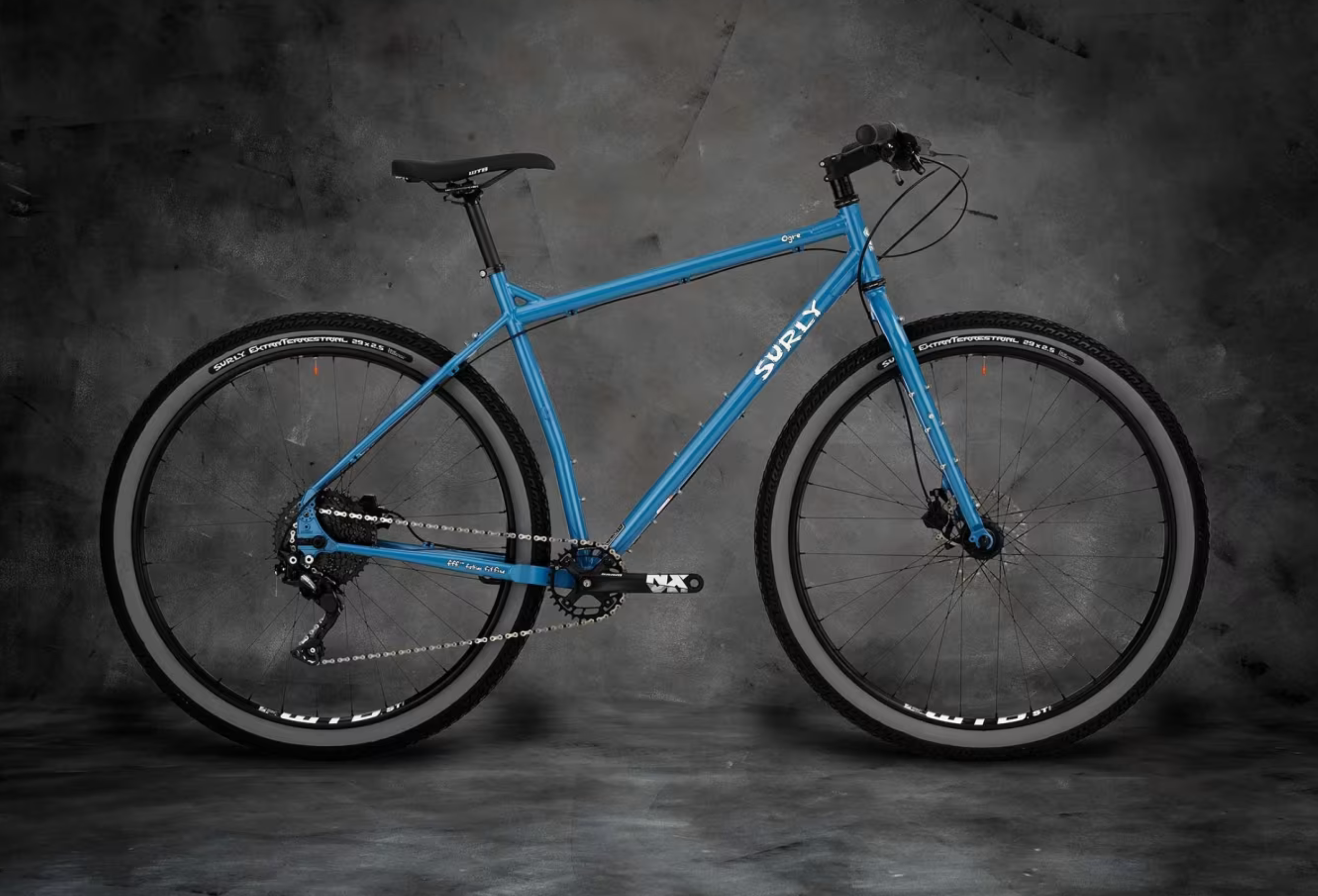
Bicycle gears Understanding how to shift gears effectively is key to enhancing your cycling experience, whether you’re tackling steep hills or cruising on flat terrain. Proper gear usage not only makes pedaling more efficient but also helps prolong the lifespan of your bicycle’s components. In this guide, we’ll dive into the essentials of bicycle gearing, explore the mechanics of gear shifting, and provide practical tips to help you become a more confident rider.
Understanding Bicycle Gears: The Basics
Bicycle gears allow riders to adjust the resistance they feel when pedaling, enabling them to adapt to different terrains and cycling conditions. The gearing system consists of several key components:
Key Components of a Bicycle Gears Drivetrain
- Shifters: Located on your handlebars, shifters control the derailleurs, which move the chain between different gears. The left shifter operates the front derailleur, adjusting the chain between the chainrings. The right shifter manages the rear derailleur, which shifts the chain across the cassette sprockets.
- Derailleurs: These components physically move the chain from one gear to another. The front derailleur shifts the chain between the chainrings, while the rear derailleur moves it across the sprockets on the cassette.
- Cassette: Mounted on the rear wheel hub, the cassette is a collection of sprockets with varying numbers of teeth. These sprockets determine the resistance level when pedaling.
- Chainrings: Located on the crankset, chainrings are the larger gears connected to the pedals. Bicycles typically have two or three chainrings that provide a range of gear options.
How Bicycle Gears Ratios Work
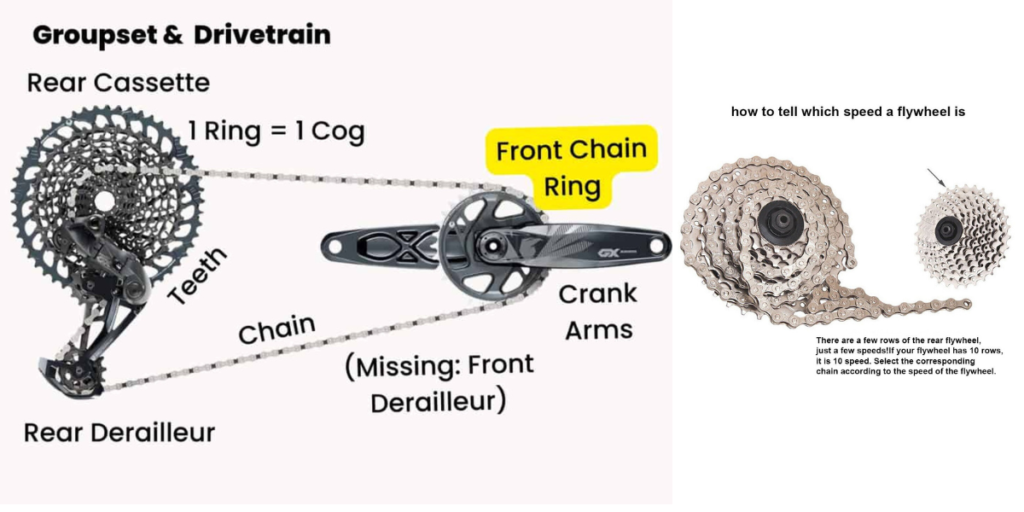
The term “gear ratio” refers to the relationship between the number of teeth on the chainring and the cassette sprocket. Understanding gear ratios is crucial for efficient cycling:
- Higher Gear (More Teeth on Chainring, Fewer on Sprocket): This makes pedaling harder but allows you to move faster. It’s ideal for riding on flat terrain or downhill.
- Lower Gear (Fewer Teeth on Chainring, More on Sprocket): This makes pedaling easier, which is useful for climbing hills or riding on rough terrain.
How to Use Your Shifters Effectively
Proper use of the shifters ensures smooth gear transitions and enhances your overall cycling efficiency. Here’s a breakdown:
Left Shifter: Controlling the Front Derailleur
- Larger Lever (Typically Closer to the Handlebar): Moves the chain to a larger chainring, increasing resistance. This is ideal for flat terrain or descending hills where more speed is needed.
- Smaller Lever (Usually Further from the Handlebar): Moves the chain to a smaller chainring, reducing resistance. This helps climb hills or when less effort is required for pedaling.
Right Shifter: Controlling the Rear Derailleur
- Larger Lever: Shifts the chain to a smaller sprocket, increasing resistance for faster pedaling on flat terrain or descents.
- Smaller Lever: Shifts the chain to a larger sprocket, reducing resistance for easier pedaling, especially during climbs.
Tips for Smooth Bicycle Gears Shifting
To optimize your gear shifting and avoid potential damage to your drivetrain, keep these tips in mind:
- Reduce Pedal Pressure When Shifting: Momentarily ease off your pedaling pressure while shifting to allow the chain to move smoothly between gears. This reduces wear on the chain and sprockets.
- Shift One Gear at a Time: When making significant gear changes, especially while climbing, shift one gear at a time to prevent strain on the drivetrain.
- Anticipate Terrain Changes: Don’t wait until you’re in the middle of a climb or descent to shift gears. Anticipate terrain changes and adjust your gears ahead of time for smoother transitions.
Gear Shifting Techniques for Different Conditions
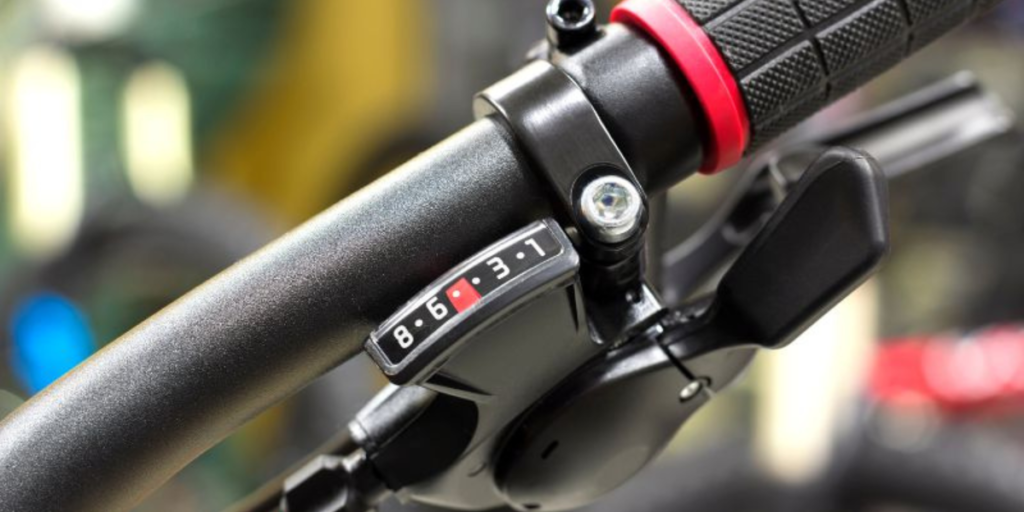
Different cycling conditions require different gear strategies. Here’s how to optimize gear usage for various scenarios:
Bicycle Gears Climbing Hills
When climbing, aim to use bicycle gears that allow for steady cadence with minimal strain:
- Downshift the Front Derailleur: Use the smaller lever on the left shifter to move the chain to a smaller chainring, providing a broader range of easier gears.
- Fine-tune with the Rear Derailleur: Use the right shifter to select a comfortable gear on the cassette, ensuring you maintain a steady pedaling rhythm.
Riding on Flat Terrain
For regular riding on flat terrain, staying in the mid-range gears is usually the best option:
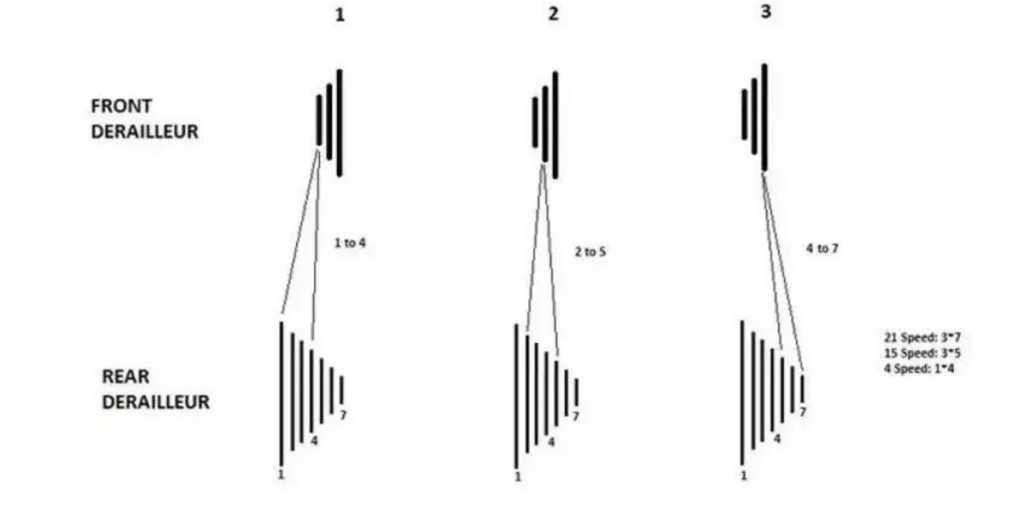
- Balance Speed and Power: Use a combination of the middle chainring and middle sprockets to strike a balance between speed and pedaling efficiency.
Descending Hills bicycle gears
Descending requires gears that allow for control while maintaining speed:
- Upshift the Front Derailleur: Use the larger lever on the left shifter to move the chain to a larger chainring, providing harder gears for faster pedaling.
- Adjust with the Rear Derailleur: Similar to climbing, use the right shifter to find a gear that allows for controlled speed while braking when necessary.
Avoiding Cross-Chaining: What You Need to Know
Cross-chaining occurs when you use extreme gear combinations, such as the largest chainring with the largest sprocket or the smallest chainring with the smallest sprocket. This causes the chain to run at an awkward angle, leading to several issues:
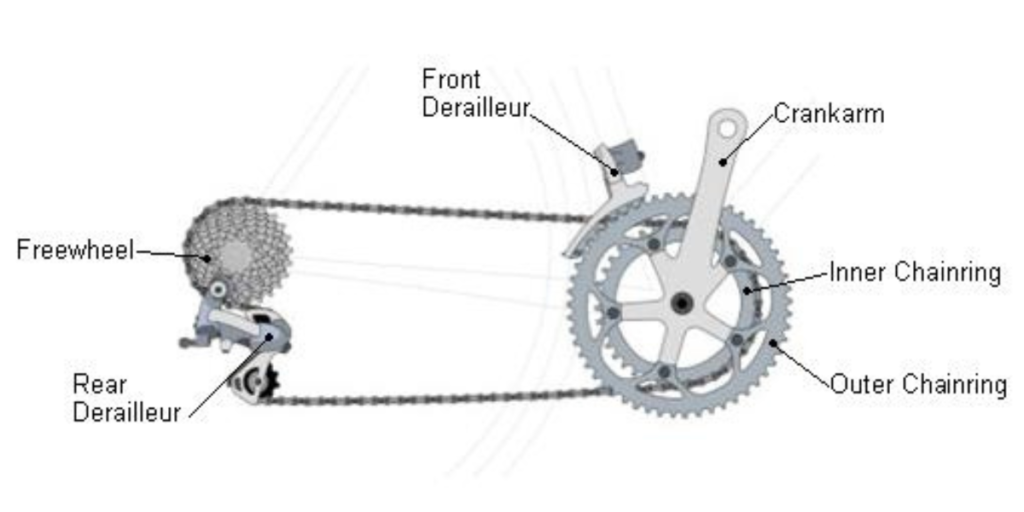
- Increased Wear on the Drivetrain: The unnatural angle puts excess stress on the chain, cassette, and chainrings, leading to premature wear and tear.
- Reduced Pedaling Efficiency: Cross-chaining can cause the chain to bind, making pedaling less smooth and wasting energy.
To avoid cross-chaining, try to keep the chain as straight as possible when selecting gears. Anticipate your next gear change to maintain a more efficient and straight chain line.
Putting It All Together: Practice and Maintenance
Understanding how to shift gears effectively takes practice. Here are some steps to help you build your confidence:
- Start on Flat Terrain: Begin by practicing gear shifts on flat ground to familiarize yourself with the different combinations.
- Practice on Gradual Inclines and Declines: Once you’re comfortable, move to gentle hills to simulate real-world cycling conditions.
- Keep Your Drivetrain Clean: Regularly clean your chain, cassette, and chainrings to remove dirt and debris, which can affect shifting performance.
- Lubricate Your Chain: Use a dedicated bicycle chain lubricant to minimize friction and wear, ensuring smooth gear shifts.
- Regular Maintenance: Consider professional servicing for thorough cleaning and adjustments of your drivetrain components.
Conclusion: Becoming a Confident Cyclist
Mastering bicycle gears shifting is essential for any cyclist looking to improve their riding experience. By understanding your bike’s gearing system, using your shifters effectively, and maintaining your drivetrain, you’ll not only ride more efficiently but also extend the lifespan of your bike’s components. With practice, shifting gears will become second nature, allowing you to confidently tackle any terrain. Happy cycling!


